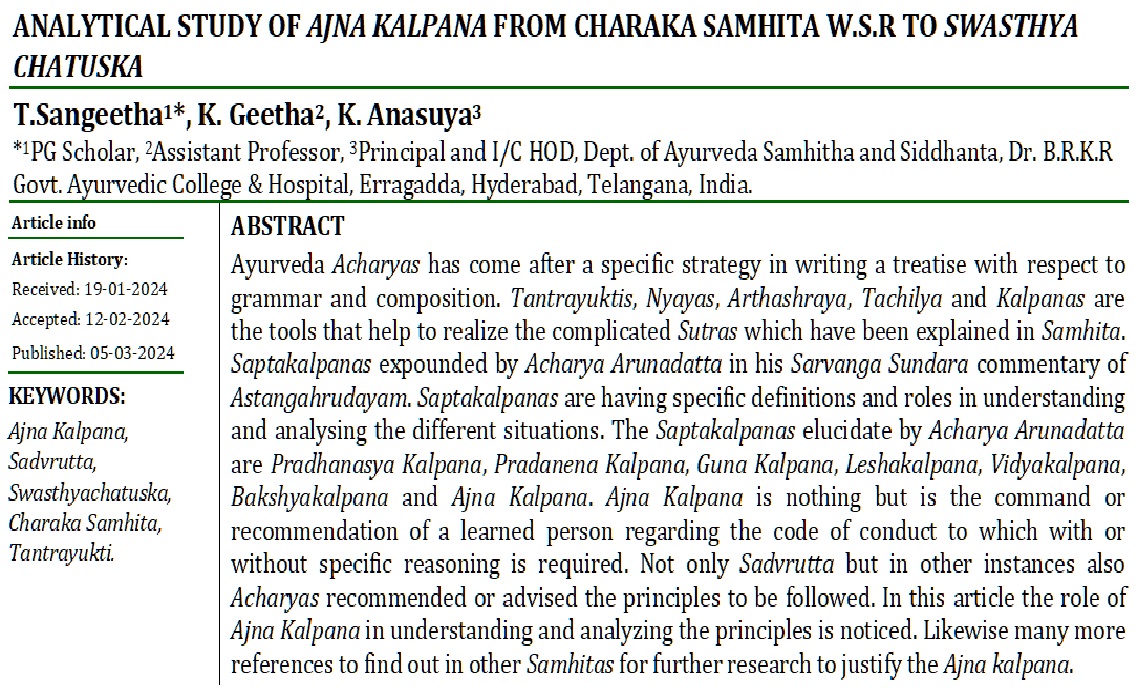Analytical Study of Ajna Kalpana from Charaka Samhita w.s.r to Swasthya Chatuska
Abstract
Ayurveda Acharyas has come after a specific strategy in writing a treatise with respect to grammar and composition. Tantrayuktis, Nyayas, Arthashraya, Tachilya and Kalpanas are the tools that help to realize the complicated Sutras which have been explained in Samhita. Saptakalpanas expounded by Acharya Arunadatta in his Sarvanga Sundara commentary of Astangahrudayam. Saptakalpanas are having specific definitions and roles in understanding and analysing the different situations. The Saptakalpanas elucidate by Acharya Arunadatta are Pradhanasya Kalpana, Pradanena Kalpana, Guna Kalpana, Leshakalpana, Vidyakalpana, Bakshyakalpana and Ajna Kalpana. Ajna Kalpana is nothing but is the command or recommendation of a learned person regarding the code of conduct to which with or without specific reasoning is required. Not only Sadvrutta but in other instances also Acharyas recommended or advised the principles to be followed. In this article the role of Ajna Kalpana in understanding and analyzing the principles is noticed. Likewise many more references to find out in other Samhitas for further research to justify the Ajna kalpana.
Downloads

Copyright (c) 2024 International Journal of Ayurveda and Pharma Research

This work is licensed under a Creative Commons Attribution-NonCommercial-ShareAlike 4.0 International License.






